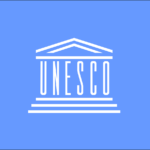Since its announcement in early September, Plan S has generated a significant amount of discussion in scholarly communication circles, including inside OSI. A number of OSI participants have expressed reservations about this plan, particularly about how it will impact the scholarly publishing world outside the US and Europe. Research-Consulting director Rob Johnson has followed this issue closely and prepared this overview for OSI.
What Plan S means for open scholarship
A coalition of European research funders (cOAlition S) announced in September 2018 that they will require immediate open access to all of the scientific publications resulting from their support effective 1 January 2020. This announcement has triggered a wide-ranging debate over how best to accelerate the shift to open.
‘Plan S’ sets out ten principles, many of which have been foreshadowed in previous policy documents and developments. Nevertheless, when taken together they represent a bold statement of intent from this group of European funders. Of particular note are the Plan’s requirements that authors retain copyright in their works (while granting most or all copyright prerogatives to the general public, in the form of an open license), that publication in subscription and hybrid journals be prohibited, and that article publication charges (APCs) be capped.
Who is behind the Plan?
The Plan is the brainchild of Robert Jan-Smits, the European Commission’s special envoy on open access, together with the Heads of the participating Research Funding Organisations and the President of Science Europe. A key driver was the European Union’s announcement in 2016 that it would pursue immediate open access by 2020 – a target which had looked highly unlikely to be met. The Plan’s supporters have cited the need for faster progress towards OA, as well as concerns over the rising cost of the transition to open access and the impasse in subscription negotiations within some European countries. 11 funders were original signatories to the Plan, while a further two have joined as at the time of writing, with others, including the European Commission itself, expected to follow in time.
How has the academic community responded?
Many researchers who will be subject to the Plan’s provisions still remain unaware of it, and there will be a significant education and advocacy challenge as the implementation date approaches. However, a number of members of the academic community have issued statements both for and against the Plan. Three organisations representing early-career and senior researchers across Europe have commended the coalition on a ‘bold and ambitious step towards Open Access’. Others have called the decision to restrict the venues in which authors may publish, and to insist on an open licence for research outputs, a violation of academic freedom. There are also concerns in some quarters that the plan could have a negative impact on recruitment to, and the internationalization of, the best research projects.
A succession of European reports, expert reviews and and working groups have found that academic incentive structures often fail to recognise, value, and reward efforts to open up the scientific process. Accordingly, the funders have stated their intention to fundamentally revise the incentive and reward system of science, using the San Francisco Declaration on Research Assessment (DORA) as a starting point. While few would disagree with this goal, questions have been raised as to how the coalition proposes to carry out this commitment in practice.
What does the Plan mean for publishers?
The response from the publishing community has been mixed. The International Association of Scientific, Technical and Medical Publishers (STM) has emphasised that it shares the coalition’s goal of expanding access, but urged caution that the next steps in this transition avoid any unintended limitations on academic freedoms, and continue to ensure the overall viability and integrity of the scholarly record. The Association of Learned and Professional Society Publishers (ALPSP) has expressed similar concerns, noting in particular the critical importance of publishing programmes to the vitality of learned societies’ disciplines and communities. Meanwhile, the Open Access Scholarly Publishers Association (OASPA) broadly welcomed the Plan, but, like STM, has expressed reservations about the proposed use of APC price caps. Others have emphasised the need to support OA initiatives that do not charge authors, which are especially important in the humanities and for researchers, institutions and countries unable to pay APCs.
Responses from individual publishers have tended to reflect their position in the marketplace. While some open access publishers and platform providers have been highly supportive, major publishers have questioned the feasibility of withdrawing support for hybrid and subscription publishing models. An analysis by consultants Deltathink suggested that Plan S will take revenue out of the scholarly publishing market, and so reduce its growth.
What about institutions and libraries?
At this stage the formal scope of the Plan extends only to researchers supported by the funders in question. However, it commits the funders to ask universities, research organisations, and libraries to ‘align their policies and strategies’, and the Association of European Research Libraries, LIBER, has stated it ‘fully welcomes’ the Plan. Whether the proposed alignment can be achieved, and how it informs future negotiations over subscription and read-and-publish deals across Europe, will be a key determinant of the Plan’s longer-term impact.
How might it affect the rest of the world?
At present, about 3% of scholarly publications worldwide would be subject to the Plan’s requirements. However, Smits and others are actively working on recruiting other funders to join the Plan, including those from the US, China and Japan.
A key bone of contention is the Plan’s apparent preference for immediate, or ‘gold’, open access, which in many cases involves author-side payments (APCs). Smits has been insistent that the Plan does not favour certain business models over others, and that it welcomes self-archiving and repositories. Nevertheless, there are fears that it could lead to a two-tier publication system, that it fails to commit to open infrastructure, and that a large-scale shift to the APC model would create new barriers for participation in the system for many regions and researchers.
What happens next?
A taskforce is currently working on an implementation plan due to be published within the next few months. It is hoped that this will put flesh on the bones of some of the principles, most notably:
- articulating how the proposed cap on APC charges will be set;
- clarifying the role of repositories in meeting the Plan’s requirements;
- outlining the level of latitude that will be permitted for transitional arrangements, such as ‘Read and Publish’ deals, as well as for outputs such as monographs; and
- explaining how the proposal that authors retain copyright of their publication will be enacted in practice.
The translation of the Plan S principles into practice in the coming years will present both challenges and opportunities for many stakeholders involved in the move to open scholarship.
Sources
- ALPSP. “ALPSP Member Briefing on PlanS,” September 21, 2018. https://www.alpsp.org/Reports-Publications/20190921plansbriefing.
- COAR. “COAR Response to Plan S,” September 12, 2018. https://www.coar-repositories.org/files/COAR-response-to-Plan-S-Sept-2018.pdf.
- DORA. “DORA Roadmap: A Two-Year Strategic Plan for Advancing Global Research Assessment Reform at the Institutional, National, and Funder Level –.” DORA Blog (blog), June 27, 2018. https://sfdora.org/2018/06/27/dora-roadmap-a-two-year-strategic-plan-for-advancing-global-research-assessment-reform-at-the-institutional-national-and-funder-level/.
- Else, Holly. “Dutch Publishing Giant Cuts off Researchers in Germany and Sweden.” Nature 559, no. 7715 (July 2018): 454–55. https://doi.org/10.1038/d41586-018-05754-1.
- Enserink, Martin. “In Dramatic Statement, European Leaders Call for ‘Immediate’ Open Access to All Scientific Papers by 2020.” Science | AAAS (blog), May 27, 2016. https://www.sciencemag.org/news/2016/05/dramatic-statement-european-leaders-call-immediate-open-access-all-scientific-papers.
- Eurodoc. “PRESS RELEASE: Researchers Support Open Access via Plan S.” Eurodoc, September 24, 2018. http://eurodoc.net/plan-s.
- European Commission. “‘Plan S’ and ‘COAlition S’ – Accelerating the Transition to Full and Immediate Open Access to Scientific Publications.” Text. European Commission, September 4, 2018. https://ec.europa.eu/commission/commissioners/2014-2019/moedas/announcements/plan-s-and-coalition-s-accelerating-transition-full-and-immediate-open-access-scientific_en.
- Fair Open Access Alliance. “The Fair Open Access Alliance (FOAA) on Plan S.” FOAA (blog). Accessed October 26, 2018. https://www.fairopenaccess.org/2018/09/20/the-fair-open-access-alliance-foaa-on-plan-s/.
- Frodeman, Robert, Elisabeth Lex, Judit Bar-Ilan, Paul Wouters, James Wilsdon, Isabella Peters, University of Sheffield (United Kingdom), et al. Next-Generation Metrics Responsible Metrics and Evaluation for Open Science. Luxembourg: Publications Office, 2017.
- Inchcoombe, Steven. “The Best Laid Plan S…” The Bookseller (blog), October 10, 2018. https://www.thebookseller.com/blogs/best-laid-plan-s-872011.
- Johnson, Rob, Mattia Fosci, Andrea Chiarelli, Stephen Pinfield, and Michael Jubb. “Towards a Competitive and Sustainable OA Market in Europe – A Study of the Open Access Market and Policy Environment.” Zenodo, February 28, 2017. https://doi.org/10.5281/zenodo.401029.
- Kingsley, Danny. “Most Plan S Principles Are Not Contentious.” Unlocking Research (blog), September 12, 2018. https://unlockingresearch-blog.lib.cam.ac.uk/?p=2145.
- Kramer, David. “Open Access at a Crossroads.” Physics Today, 2018. https://doi.org/10.1063/PT.6.2.20181011a.
- LIBER Europe. “LIBER Supports New Plan to Make Open Access A Reality By 2020.” LIBER (blog), September 4, 2018. https://libereurope.eu/blog/2018/09/04/liber-supports-new-plan-to-make-open-access-a-reality-by-2020/.
- Matthews, David. “Huge Rise in Subscription Costs despite Open Access Switch.” Times Higher Education (THE) (blog), December 5, 2017. https://www.timeshighereducation.com/news/huge-rise-subscription-costs-despite-open-access-switch.
- Moedas, Carlos. “Statement by Carlos Moedas: ‘Plan S’ and ‘COAlition S’ – Accelerating the Transition to Full and Immediate Open Access to Scientific Publications.” European Commission, September 4, 2018. https://ec.europa.eu/commission/commissioners/2014-2019/moedas/announcements/plan-s-and-coalition-s-accelerating-transition-full-and-immediate-open-access-scientific_en.
- Pollock, Dan, and Ann Michael. “News & Views: Potential Impact of Plan S.” Delta Think (blog), September 25, 2018. https://deltathink.com/news-views-potential-impact-of-plan-s/.
- Poynder, Richard. “Open and Shut?: ‘It Is for Publishers to Provide Plan S-Compliant Routes to Publication in Their Journals.’” Open and Shut? (blog), October 10, 2018. https://poynder.blogspot.com/2018/10/it-is-for-publishers-to-provide-plan-s.html.
- Redhead, Claire. “OASPA Offers Support on the Implementation of Plan S.” OASPA (blog), October 2, 2018. https://oaspa.org/oaspa-offers-support-on-the-implementation-of-plan-s/.
- Schiltz, Marc. “Science Without Publication Paywalls: A Preamble to: COAlition S for the Realisation of Full and Immediate Open Access.” Science Europe, September 4, 2018. https://www.scienceeurope.org/wp-content/uploads/2018/09/cOAlitionS_Preamble.pdf.
- Schneider, Leonid. “Response to Plan S from Academic Researchers: Unethical, Too Risky!” For Better Science (blog), September 11, 2018. https://forbetterscience.com/2018/09/11/response-to-plan-s-from-academic-researchers-unethical-too-risky/.
- Science Europe. “COAlition S: Making Open Access a Reality by 2020: A Declaration of Commitment by Public Research Funders,” 2018. https://www.scienceeurope.org/coalition-s/.
- STM Association. “STM Statement on Plan S: Accelerating the Transition to Full and Immediate Open Access to Scientific Publications.,” September 2018. https://www.stm-assoc.org/2018_09_04_STM_Statement_on_PlanS.pdf.
- Suber, Peter. “Thoughts on Plan S.” Peter Suber (blog), September 4, 2018. https://plus.google.com/u/0/+PeterSuber/posts/iGEFpdYY9dr.
- Tracz, Vitek. “F1000 Supports EC’s Plan for Full and Immediate Open Access (Plan S).” F1000 Blogs (blog), September 4, 2018. https://blog.f1000.com/2018/09/04/f1000-supports-ecs-plan-for-full-and-immediate-open-access-plan-s/.
- Urdal, Henrik. “Free Access at a High Price.” PRIO Blogs (blog), September 20, 2018. https://blogs.prio.org/2018/09/free-access-at-a-high-price/.
- Working Group on Rewards under Open Science. “Working Group on Rewards,” 2017. https://ec.europa.eu/research/openscience/index.cfm?pg=rewards_wg.










